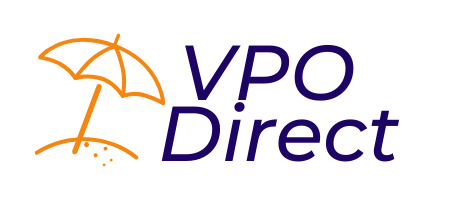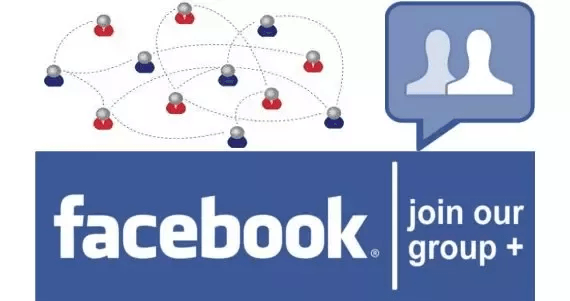Coronavirus Relief Aid
How Small Businesses Can Get Coronavirus Relief Through The CARES Act
Segments of the U.S. economy have nearly come to a halt in recent weeks as government officials have issued stay-at-home orders to minimize the spread of the coronavirus.
While meant to protect Americans’ health, these directives have crippled many small businesses. Companies have also laid off workers, leading to record unemployment claims. More than 6.6 million Americans sought unemployment benefits in the fourth week of March alone.
To alleviate the economic impact of the coronavirus on both individuals and businesses, Congress passed the Coronavirus Aid, Relief and Economic Security (CARES)
Act on March 27. The legislation provides economic assistance to small businesses, including:
• The Paycheck Protection Program
• The expanded U.S. Small Business Administration (SBA) Economic Injury Disaster Loan program
• Updated business tax provisions
Take note that while the act has been signed into law, some government websites may not have been updated yet to reflect the programs below. Here’s what small businesses need to know.
The Paycheck Protection Program
One of the biggest lifelines to small businesses the CARES Act offers is the Paycheck Protection Program, which consists of $350 billion in government-backed loans to help companies maintain their payrolls through June 2020. Eligible companies can apply to borrow up to 2.5 times their average eligible monthly payroll costs, up to $10 million, and interest rates on the loans will not exceed 4%. Depending on how much a business borrows and how it uses the funding, all of the loan—or a portion of it—might be forgiven.
What Businesses Are Eligible?
The program is designed for companies and nonprofit organizations with fewer than 500 workers, which includes full-time, part-time and other types of employees. Certain businesses with up to 1,500 workers are eligible, too, according to the U.S. Chamber of Commerce. People who are self-employed, sole proprietors, freelancers, contract or gig economy workers can also apply. Companies must have been operational on Feb. 15, 2020 to be eligible.
The program is flexible and generous compared to other SBA loan offerings: The loans do not require a personal guarantee or collateral, and applicants will not be asked if they were denied credit previously.
How Much Can You Borrow?
Companies should divide their payroll costs over the past year by 12 to determine their average monthly payroll, then multiply by 2.5 to find the maximum they can borrow, up to $10 million. Wages beyond $100,000 are excluded, as are payroll taxes, railroad retirement taxes, income taxes and compensation for workers who live outside the United States. Part-time employees and contractors are included in the payroll calculation.
If Company A paid $300,000 in eligible payroll to its workers and another $60,000 to contractors over the past 12 months, the average monthly payroll would be $30,000. So Company A could apply for a loan of up to $75,000.
How Does Paycheck Protection Program Loan Forgiveness Work?
Businesses that maintain their payroll levels—by paying workers at their normal rates for at least eight weeks after the loan is originated—will be eligible for forgiveness.
You can get loan funds forgiven if they were used to pay qualifying payroll costs, mortgage interest, rent or utility payments over the eight-week period. In the example above, if Company A received a $75,000 loan, and its payroll and qualifying expenses were higher than the amount borrowed, the total amount would be forgiven.
The amount forgiven will be reduced if a business reduces the number of full-time employees or reduces wages for employees earning $100,000 or less by more than 25%, based on the previous year’s numbers. Businesses have until June 30 to reinstate employee numbers or salaries that changed between Feb. 15 and April 26 and maintain eligibility for loan forgiveness.
How to Apply for a Paycheck Protection Program Loan
Normally, SBA-backed loans are handled by a network of banks the organization works with, known as SBA-approved lenders. But while the SBA will still guarantee the loans, more banks will be able to issue Paycheck Protection Program loans.
Existing SBA lenders can start accepting applications from small businesses and sole proprietors on April 3, according to the Treasury Department, and from independent contractors and self-employed workers on April 10. New lenders can start making loans as soon as they’ve been enrolled in the Paycheck Protection Program. An online application, which must be submitted to a participating lender, is now available on the U.S. Department of the Treasury website.
Payback terms will be determined during the application process, and the interest rate cannot exceed 4%. Payments on Paycheck Protection Program loans will be deferred for six months.
While application guidelines are still being finalized, business owners will likely need to have proof of how long their companies have been in operation, where their businesses are located and documentation showing payroll expenses and revenue.
U.S. Rep. Anthony Gonzalez (R-Ohio) recommended to business owners during a webinar Tuesday that they be proactive with their banks and ask what documents they’ll need to provide before starting the application. U.S. Secretary of the Treasury Steven T. Mnuchin anticipates the first loans will be distributed by the end of the first week of April, Gonzalez said.
Expansion of the SBA’s Economic Injury Disaster Loan Program
The CARES Act also introduced an expansion of the SBA Economic Injury Disaster Loan (EIDL) Program. The goal of the expansion is to offer financial support to more businesses experiencing reduced revenue due to the pandemic.
Historically, the SBA has offered disaster relief assistance to businesses, homeowners and renters in specific areas where federally declared disasters occurred. However, due to COVID-19, companies in all 50 states, Washington, D.C. and U.S. territories can apply for a disaster loan. They also can receive a $10,000 advance on the loan.
The EIDL program provides working capital to small businesses via low-interest loans in amounts of up to $2 million. Businesses pay an interest rate of 3.75%, while nonprofits will pay 2.75%. Loan terms can last up to 30 years, and are determined case by case.
Businesses can apply for a disaster loan
and the $10,000 advance. The SBA has simplified processing requirements for the application.
How Does the $10,000 Loan Advance Work?
Companies that have applied for a disaster assistance loan due to COVID-19 can request the $10,000 advance to help cover costs. If the loan application is approved, the SBA must distribute the advance within three days. Applicants are not required to repay the advance, even if they are subsequently denied an EIDL.
Those who receive an EIDL before the Paycheck Protection Program becomes available can refinance it into a loan through the Paycheck Protection Program in the future. Doing so might make the funds eligible for forgiveness. Even if the disaster loan is refinanced, the advance does not need to be repaid.
If a company receives a disaster loan, it can also borrow through the Paycheck Protection Program. However, the loan funds received must be used to pay for different expenses. If an EIDL was used to cover wages in April, for instance, then money derived from the Paycheck Protection Program cannot be used to cover payroll for those same employees.
Northwest Florida Small Business COVID-19 Recovery Grant Program
Gulf Power, in partnership with the Florida SBDC at UWF, has created the Northwest Florida Small Business COVID-19 Recovery Grant Program. The Florida SBDC at UWF will assist eligible for-profit businesses with applying for the grant, UWF will distribute the appropriate funds to businesses who have been awarded the grant, and a third-party review board will be created to review applications.
Applications available for download beginning April 6, and must be submitted between April 8 and April 14.
Click the link below for more information.
Small businesses with 100 employees or fewer can access loans up to $50,000 with 1-year terms from The Florida Small Business Emergency Bridge Loan Program


